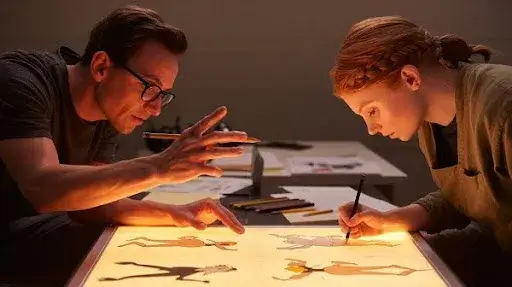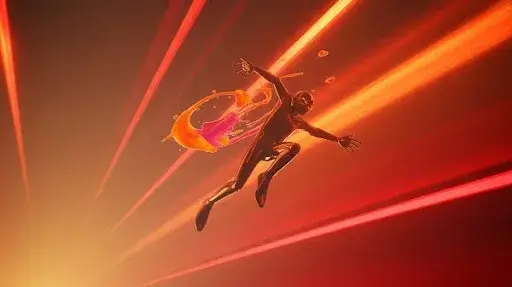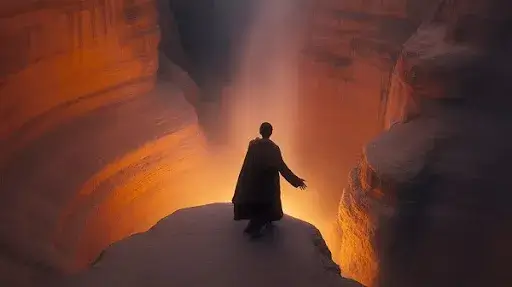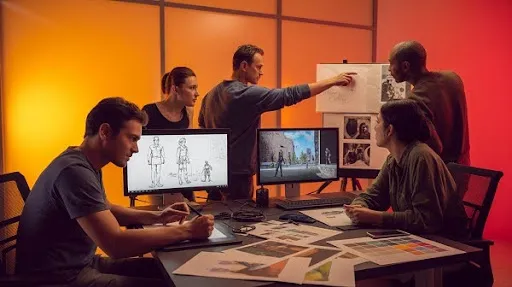What makes people believe an animated sequence is alive is the expectation of movement, not the movement itself. There is a tiny pause before the punch lands, before the dancer leaps, and that is where the anticipation in the animation takes place. It is the pause before the heartbeat that makes every action and inaction feel intentional and engaged, and the presence of a signal.
Every frame depends on anticipation. The anticipation guides the spectators, allowing tension to build and providing an emotional connection. Without tension, even the most artistically rendered scene feels devoid of meaning. This anticipation is not one of the animation principles; it is the implicit order behind every blink and every sudden movement.
At Prolific Studio, animators treat anticipation like a craft in itself. Having anticipation is not simply fulfilling one of Disney’s 12 principles of animation. It is a fundamental storytelling technique. With anticipation, the animator can transform a sequence of standard actions through ingenious order, pattern, and emotional beats so that it captures the viewers’ attention.
What Is Anticipation in Animation?
To put it simply, anticipation in animation is the pause before the action. It is what tells an audience something is coming, like the crouch before a jump, the weight shift before a throw, or the eyebrow lift before laughter.
It’s one of the core animation principles. It exists to make motion feel intentional. When used effectively, anticipation ensures that nothing looks accidental. Everything on screen has a plausible rationale.
Picture a spring that has energy stored and is about to snap. That moment of collection gives tension, determination, and strength, even if fleeting. It is that moment that gives clarity and weight to everything that follows.
Significance of Anticipation in Animation
Animation is about rhythm and timing. Good animation is not about constant motion. Anticipation gives the audience a moment to anticipate what is happening, enhancing the animation’s fluidity, expressiveness, and intentionality.
Here’s why anticipation matters so much in animation:
1. Clarity and Readability
Without a setup, actions look random or rushed. When a character jumps without crouching first, it breaks logic. A little preparatory motion fixes that; it tells the audience what’s coming and makes it feel natural.
2. Weight and Mass in Motion
Every real movement involves effort. A boxer winding up before a punch or a dancer lowering slightly before a leap shows how force is built. This sense of weight and mass in motion makes 3D animation more believable and grounded.
3. Building Suspense
That small gap before an action can be more gripping than the action itself. It’s what keeps viewers glued to the screen, the held breath before the strike. This is how anticipation builds suspense in animation and turns timing into emotion.
4. Revealing Personality
A character’s anticipation says a lot about who they are. A cheerful one moves quickly and bounces into action; a calm or moody one takes their time. The rhythm and exaggeration of anticipation reveal personality in motion more effectively than words ever could.
At Prolific Studio, animators use anticipation as a storytelling signal. Every small shift, blink, or gesture carries intention. Nothing moves without purpose.
Animation Principles: The Role of Anticipation in Disney’s 12
When the pioneers at Disney laid out their 12 principles of animation, they were building a foundation for believable storytelling. Anticipation sits near the top because it prepares both the motion and the audience’s mind.
It connects thought to action, the moment that shows why something is about to happen. When paired with staging in animation, it becomes even stronger. Staging directs where the audience should look; anticipation tells them what’s about to unfold.
Imagine a spotlight narrowing on a door just as a character leans forward. You don’t need a single word to know what’s coming next. That synchronization between staging and anticipation gives animation flow and emotional clarity.
Techniques to Create Strong Anticipation in Animation
Animators possess their own individual styles for generating pre-release tension, though a few strategies remain constant. At Prolific Studio, we employ the same techniques in every project. Anticipation, in stimulating, fluid animation, focuses on rhythm and timing, enhancing the animation’s fluidity, expressiveness, and intentionality.
1. The Wind-Up, The Preparation Before Action
This is the most direct form of anticipation, the preparatory motion. It’s the part that stores energy before it’s released.
- A runner leaning forward before sprinting.
- A magician raising a hand before revealing a trick.
- A cartoon cat pulls its arm far back before throwing something.
That wind-up moment lets the viewer feel the energy gathering. It sets the stage for the action and gives it weight.
2. Facial Anticipation
The face often leads the body in animation. A character’s feelings of surprise, panic, joy, or dread are evident even before they are expressed through a small facial expression and are revealed in the next action.
Good animators rarely let a face stay neutral before movement. Those small transitions are what make a performance feel human.
3. Audio and Timing Build-Up
Anticipation doesn’t just live in visuals; it thrives in timing and sound. A growing hum, a pause in music, or footsteps slowing down just before an event all build suspense.
At Prolific Studio, sound design is treated as part of the storytelling. The animation timing and the audio rhythm work together to guide the audience’s emotions before the main event.
4. Staging and Camera Movement
Staging in animation decides where the audience should look. A subtle pan, a slow zoom, or even a lighting cue can point their attention to the right spot before anything happens.
In 3D animation, if a character glances at an object, the camera may follow. This shared focus builds a natural form of anticipation without forcing it.
5. Environmental Cues
The world around the characters can also build anticipation. A shaking glass before heavy footsteps, or dust swirling before a vehicle speeds through, these physical cues tell part of the story before the main action begins.
This approach gives life to everything in the frame, not just the characters. That is what makes animation expressive storytelling, and even the background helps in mood building.
How Anticipation Builds Suspense and Storytelling Power
Suspense isn’t just about surprise. It’s about control, deciding when to give and when to hold back. Anticipation is what gives animators that control.
The moment before impact, before laughter, or before heartbreak, that’s the moment that pulls people in. In 3D animation, this technique adds cinematic strength. A robot slowly powering up before charging forward feels heavier and more dramatic than one that moves instantly. That controlled buildup makes the action satisfying.
You see it in every genre. In comedy, exaggerated anticipation amplifies humor. In action, it raises energy. In emotional scenes, it creates space for feeling.
At Prolific Studio, animators use anticipation techniques in 3D animation to balance pacing and rhythm. From character-driven sequences to brand stories, it’s what keeps the audience locked in.
Using Anticipation to Convey Weight and Mass
One of the hardest challenges in animation is making weight feel real. Anticipation helps solve that by setting up how effort looks.
Before jumping or lifting, characters react to gravity; they bend, shift, and push. Those motions give the sense of weight and mass in motion, making each move believable.
- A feather moves fast with little wind-up.
- A boulder lifts slow and heavy.
- A robot landing shakes the ground before it steadies.
Each example uses anticipation to show weight, giving the audience a sense of physics even when nothing is real.
Believable movement is a top priority at Prolific Studio. It is a matter of capturing the illusion of real effort and weight, so the scene registers as real.
Anticipation in 2D vs 3D Animation
The foundation stays the same, but the style changes. In 2D animation, anticipation leans toward exaggeration. Characters stretch, squash, and overact just enough to make their movement read clearly. Since 2D relies on limited frames, bigger anticipation ensures the audience understands every intention.
In 3D animation, anticipation is more restrained. Digital tools offer more precise control. Subtle shifts of heads, breath patterns, and small muscle movements are more than fundamentals; they are signals for realism and emotional truth.
Both styles are used for a reason at Prolific Studio. In commercial spots designed to capture attention, bold and exaggerated stylization is the expectation. In cinematic scenes, the expectation shifts to emotional and weighty subtleties.
No matter the format, the rule stays the same: anticipation bridges thought and motion. It gives life to the in-between moments that make characters feel human.
Anticipation in 3D Animation Production
In a professional 3D animation studio, anticipation is not an afterthought; it’s planned right from the blocking stage.
- Blocking Phase: Main poses are drafted. Anticipation poses, like leans, bends, or pre-motions, are mapped out.
- Spline Phase: Timing is refined. The anticipation and main motion are synced for smoothness.
- Polish Phase: Micro details, finger tightening, breathing, and eye shifts are added for realism.
These layers give depth and rhythm to a performance. Nothing moves without intention. The same principle applies from a character’s punch to a leaf swaying in the breeze.
At Prolific Studio, the team focuses on how each pause or pre-motion contributes to storytelling. Even the smallest anticipation holds emotional weight.
That’s why mastering anticipation techniques in 3D animation takes years; it’s not about speed or effects, but about control and rhythm.
Frequently Asked Questions
What is anticipation in animation?
These cues precede action, preparing the audience and character for what is to come. The cues make movement clear, believable, and emotionally charged, as they prepare the audience for what is next.
How does anticipation build suspense in animation?
It lets tension breathe. That pause before the main motion keeps the audience expecting something, building emotional engagement.
What are examples of anticipation in character movement?
We all know some, such as crouching before a jump, pulling back before a throw, and a slight twitch of a muscle before a sudden expression.
How do staging and anticipation work together?
Staging directs focus, anticipation controls timing. Together, they lead the viewer’s eyes and emotions effortlessly through the scene.
How is anticipation used differently in 2D and 3D animation?
2D uses exaggeration for clarity; 3D favors detail for realism. Both aim for expressive storytelling.
Can anticipation apply to non-character animation?
Yes. Even environmental elements, a door creaking, lights flickering, or wind building up, can create anticipation before motion.
Final Words
Anticipation is the pulse that makes animation breathe. It is the minimum necessary to be called a principle. It gives intent to movement and emotion to silence.
Anticipation is what all emotionally engaging 2D and 3D animation has in common. It builds the rhythm, timing, and suspense of a scene, transforming a sequence from a mere technical presentation into a living story.
At Prolific Studio, one of the best animation studios in Boston, animators build anticipation into every frame. Every small pause, every slight motion carries a purpose to make the audience feel the moment before it happens.
If you want your animation to captivate viewers, to make them wait with excitement for the next frame, anticipation is your key. And at Prolific Studio, it’s a skill turned into art.
Related Articles:










